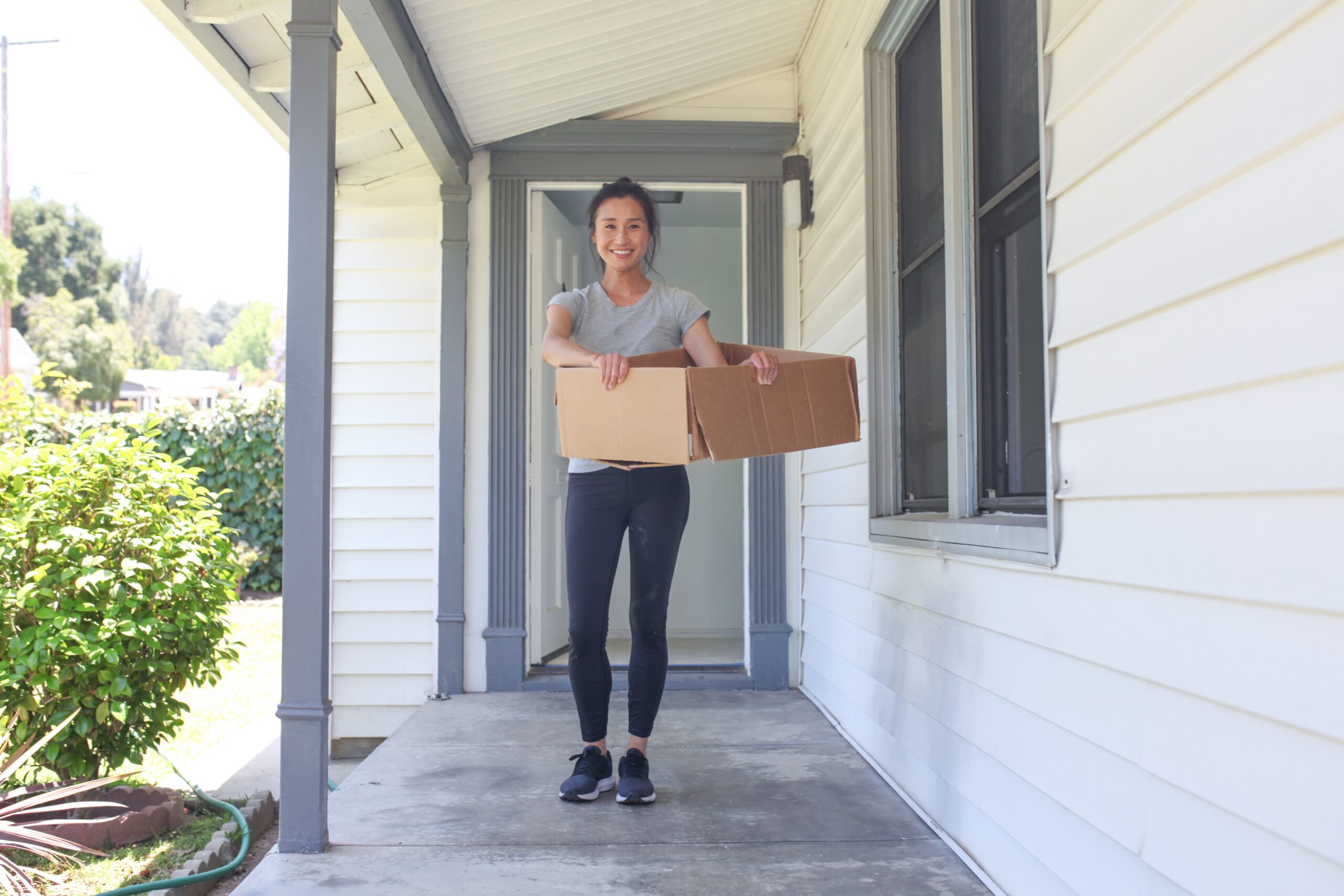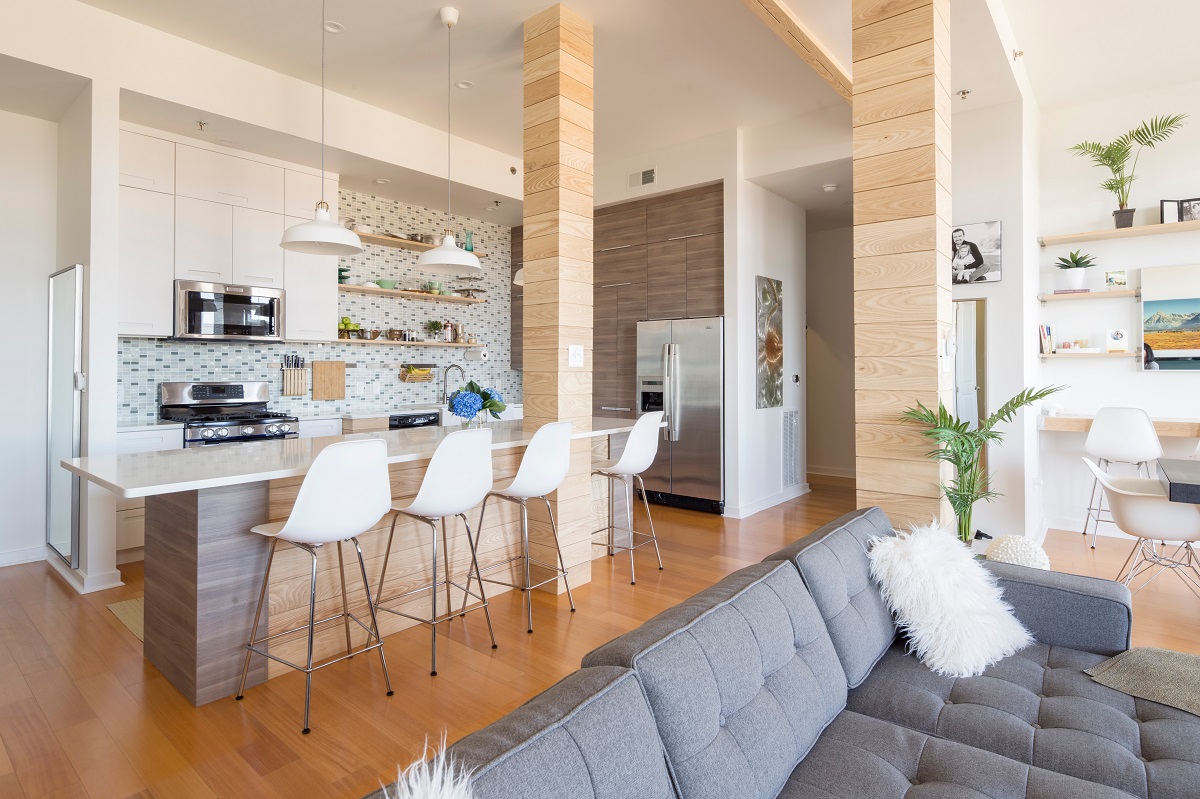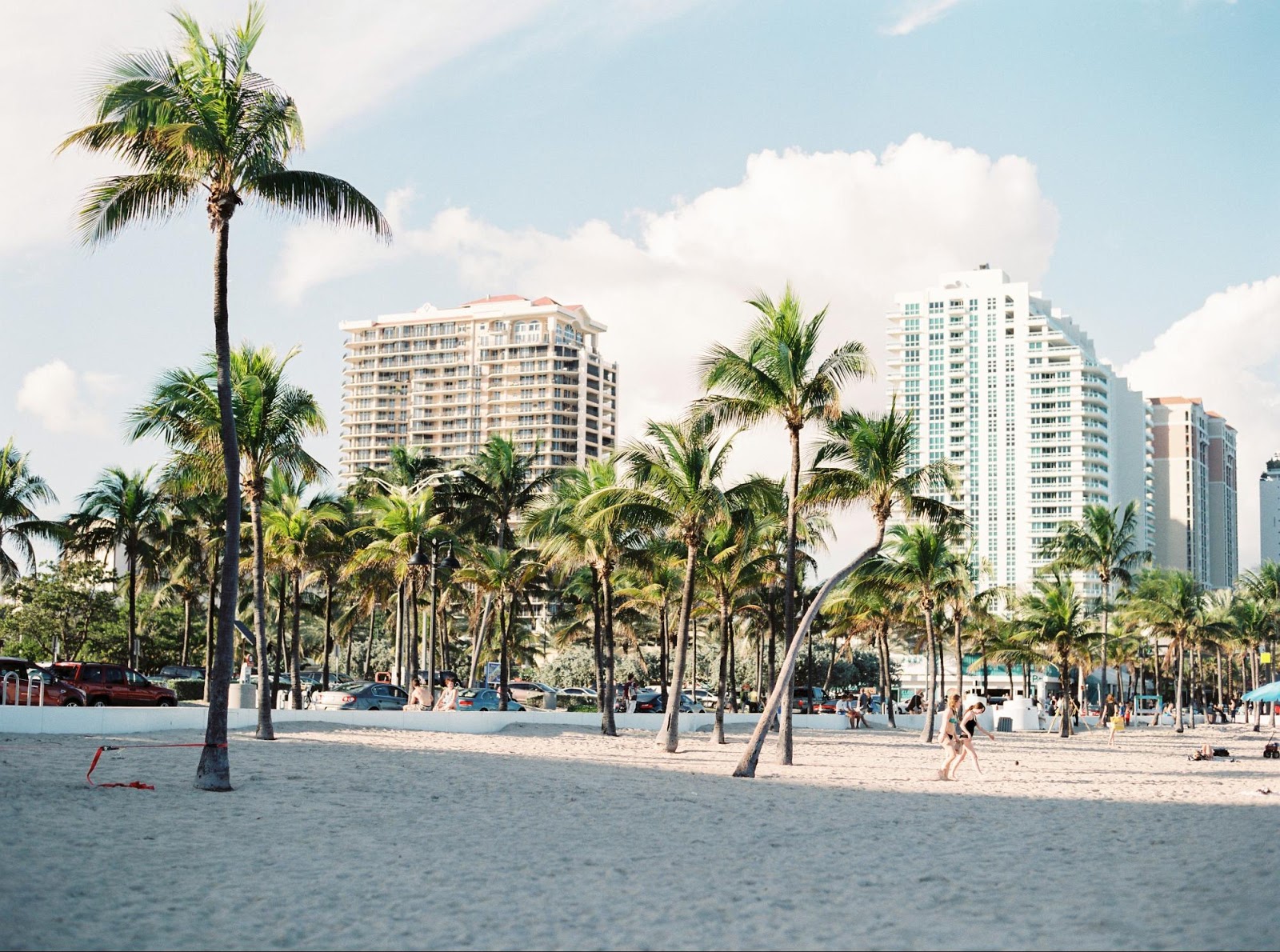
How to Rent an Apartment: Landing’s Comprehensive Guide

It’s no secret that the traditional apartment rental process can be complicated and difficult to navigate—particularly for renters who are new to apartment hunting or need to find a place quickly. Between figuring how much you can afford, researching new neighborhoods, actually touring places, and deciding which one is the right fit for you, it’s no wonder that finding a new place to live is never anyone’s favorite item on their to-do list.
To help, Landing has compiled this comprehensive guide so that you can go into your apartment search armed with the right things to consider, including:
- How to define your apartment hunting criteria
- How to find an apartment
- How to apply for an apartment
- How to understand and sign a lease
- How to move into a new apartment
Let’s get started!
1. How to define your apartment hunting criteria

The first step in finding your dream apartment is defining the criteria for the type of apartment you want. Figuring out what is a deal-breaker versus a nice-to-have will help you narrow down your list of apartments and ensure you are only pursuing ones that make sense for your current lifestyle.
When defining your apartment criteria, follow these steps:
- Set your apartment budget
- Decide on your apartment size
- Set your apartment non-negotiables
- Consider your neighborhood
- Furnished or unfurnished?
- Factor in fun amenities
- Figure out how long you want to stay
Set your apartment budget
Knowing what you can afford to pay each month is a crucial first step when searching for an apartment. The typical rule of thumb is that an apartment renter shouldn’t spend more than 30% of their monthly income on rent, so crunch those numbers before you decide on a realistic price range. Be sure to keep in mind other housing costs such as heat, hot water, electricity, and cable/internet, as these can add up quickly. Ask yourself:
- How much can you afford to spend on monthly rent, utilities, and parking? Will you also need to pay for storage, access to a bike room, or any other apartment amenities?
- Can you afford higher seasonal costs for heating in the winter and cooling in the summer? If not, make sure to factor that into your maximum rent cost.
- How much cash do you have on hand to put toward a security deposit, first or last month’s rent, a broker’s fee, or a pet deposit?
- How much will the actual move cost you? How will that affect your cash flow in the first few months of your lease?
If you’re not finding anything promising, try to resist the urge to keep upping and upping your price range—the last thing you want is to get stuck in a lease agreement that you can’t reasonably afford.
Decide on your apartment size
Depending on your lifestyle and whether you’re planning on living alone, with a partner, or with roommates, you’re going to want to search for different apartment sizes. If you’re unsure of what type of apartment is best for you, here’s our breakdown:
- Studio apartment: The smallest on the list, a studio apartment is a space with a bathroom and a single room that encompasses your kitchen, living room, and bedroom. Studios are a great option if you don’t need a ton of space, and they cost less to heat and power due to their small size. Just be sure that you understand the kitchen equipment included in the studio, as some only offer a kitchenette rather than an oven and full-sized refrigerator.
- Loft apartment: Lofts are also one-room housing options with a single bathroom, but they tend to have a much airier space than traditional studios. Since they’re often found in converted industrial buildings, they typically have high ceilings, a full-sized kitchen, plenty of square footage, and opportunities to create distinct rooms with partitions or walls.
- One-bedroom apartment: A one-bedroom apartment usually has four distinct rooms: a living room, a separate kitchen, a bedroom, and a full bathroom.
- Two-bedroom apartment: A two-bedroom apartment usually has five distinct rooms: a living room, a separate kitchen, a full bathroom, and two bedrooms. These can be great for roommates, or the second room can be used as anything from an office to a playroom for children.
Of course, the number of people living with you will play a big role in determining what size apartment is right for you, but it’s also key to ask yourself what space you’ll need aside from your bedroom. For example, if you work from home, you might want to consider a two-bedroom apartment to give yourself a dedicated office space.
Set your apartment non-negotiables
Now that your budget is set, it’s time to make a list of what you absolutely need from your next apartment. Remember, there are many types of apartments out there, and your hunt will get a lot easier if you know what you’re looking for.
Examples of apartment renting non-negotiables you should consider include:
- A certain square footage
- A minimum number of rooms or bedrooms
- Pets allowed
- Access to outdoor space
- Natural light
- Wood or tile floors
- Closet space
- Apartment floor
- Storage space
- Laundry in unit or the building
- Air conditioning
- Parking
- Dishwasher
Again, you might decide that these amenities aren’t necessary, but knowing to seek them out from the get-go will make sure you’re not wasting your time chasing the wrong apartments.
Consider your neighborhood
When you’re putting together your list of non-negotiables, consider making your future neighborhood one of them, factoring in things like:
- Distance to work
- Safety
- Nearby parks, restaurants, and other attractions
- Local grocery stores
- Public transportation
Make sure your target neighborhood suits your lifestyle. If you like to spend quiet nights at home, double-check your apartment building isn’t near a late-night hotspot. Likewise, if you live for dining out, find a neighborhood with interesting restaurants, or with transit options that make it easy to get to adjoining areas.
Furnished or unfurnished?
One additional consideration to make is whether you want to rent a furnished or unfurnished apartment. Unfurnished apartments are standard fare, and while it may take some time (and some money) to fill the space and make it your own, you do have ultimate control over how you decorate your new digs.
On the other hand, furnished apartments like Landing’s can be a great option if you are moving to a new city without any of your belongings, or if you’re just getting started in the rental game and don’t have a ton of furniture to fill your new space with. We also stylize our furnished apartments with modern housing trends in mind, so you’ll be able to live in a trendy and sophisticated space without all the legwork of putting it together.
 Factor in fun amenities
Factor in fun amenities
While you want to find a unit that fits your needs, amenities within your building can also have a huge impact on your quality of life. Some buildings may have little more to boast than a mailbox, while others have upped their amenities game and offer everything from access to grand pianos to in-building restaurants and salons. Here is a list of example luxury apartment amenities to consider as you look for a new home:
Special rooms
- Gym: Some buildings will offer a room full of exercise equipment, while others even host fitness classes or sessions with personal trainers. Yoga rooms and dance studios are also a popular offering.
- Sauna: A dry or wet sauna can be a great place to relax and destress.
- Laundry room: If you don’t have a washer and dryer in your unit, you’ll definitely want one in your building.
- Coffee shop: Grab your morning cup of joe without even leaving your building!
- Party room: Reserve a room in your building so you can fit more guests at your next soiree. This way, you also don’t have to worry about someone damaging your furniture.
- Meeting room: If you work from home, having a meeting room onsite can be a great way to meet with clients or have a more professional-looking background on your Zoom calls.
In addition to these rooms, you may want to be on the lookout for a building with a parking garage (if you have a car). If you drive an electric or hybrid vehicle, make sure it has charging stations for your car, too. An on-site parking garage can save you from the hassle of street parking and shave minutes off your commute.
Services
- Doorman: It’s a great perk to have someone sign for your packages and screen incoming guests.
- Pet services: Save on petcare with your building’s grooming and dog walking services. Some buildings may even have staff who can stop in to care for your cat while you’re gone.
- Security guards: Guards and cameras can help you feel safe at home.
- Recycling collection: Some buildings may pick up recycling at your apartment door, saving you a crowded elevator trip.
- Package locker: A storage locker allows you a safe space to store your packages and makes it easy to pick up your packages when you arrive home.
Community
Amenities that can help you connect with your neighbors include:
- Co-working space: Work among others while working from home.
- Game nights and happy hours: Take advantage of scheduled events and activities that take place inside your building.
- A lounge: A common space helps you escape your apartment for a change of scenery, allowing you to meet new people in the process.
Figure out how long you want to stay
A lease agreement is a tricky obligation to navigate, particularly if you have a job or lifestyle that needs freedom to travel. Apartments in major metropolitan areas are more likely to lock renters into long-term contracts in an effort to stabilize income, which can be problematic for renters that need more flexibility.
If you’re looking to maximize your options while minimizing commitment, flexible or month-to-month leasing plans are your best bet. Landing provides thousands of apartments across the country that can be booked online in minutes with no long-term commitments, so you can live on your terms. Search for an apartment here.
2. How to find an apartment

Now that you’ve finished researching what to look for in an apartment, it’s time to actually start searching! Here are some tips for staying organized throughout your apartment search, finding an apartment, and touring potential homes.
Create a spreadsheet
When apartment hunting, it’s easy to get overwhelmed—particularly if your browser has a million tabs open—so having a spreadsheet at your disposal will help give you access to all of your options on-demand. At the very least, your spreadsheet should include the following facts:
- Link to the listing
- Address
- Listed rent price
- Amenities
- Notes
As you begin visiting apartments, you can add in information and delete the apartments you’ve ruled out. Highlight apartments you’re strongly considering in green, and use your notes to help you narrow your search.
Make a list of questions
As you look at apartments, some will give you an immediate bad vibe. Others will seem great at first glance, but it’s important that you ask the potential landlord or apartment manager about all the details of the apartment and lease. Armed with all the relevant information, you can compare it to other apartments on your spreadsheet in order to identify the strengths and weaknesses of each listing.
Make sure to ask questions about:
- Which utilities are included in the lease
- The average cost of utilities including heat, A/C, water, internet, and trash disposal
- Whether the apartment comes furnished
- Pet policy and pet deposit
- Parking and bike parking, if needed
- Access to roof space, courtyard space, and other shared building amenities
- The type of lease available
Schedule a tour of your apartment
The next step in your apartment rental process is actually visiting some places to get a feel for what they’re like. It’s always recommended to view at least a handful of apartments before committing to one. This is especially important if you’re new to renting. It’s good to have some options to compare, and viewing more than one apartment may even help you hone your criteria list as you continue to weigh what’s important to you.
You can schedule a tour of an apartment by reaching out to the landlord, management company, or real estate agent that posted the apartment listing, then setting a time that would be good for you to meet. Do note that since sometimes apartments are already occupied that you may have to work around the schedules of the current tenants.
Observe the details on your tour
While you’re on your apartment tour, be sure to take it slow and don’t be afraid to stop, observe your surroundings, and ask plenty of questions. Particularly if you’re touring a lot of places at once, it can be helpful to take pictures of each apartment, and jot down notes about your initial impressions that you can refer back to later.
While it may feel awkward, it can also be a good idea to open closet doors, flush toilets, and run the shower to make sure everything is in working order (and get a feel for your future water pressure!). The last thing you want is to commit to an apartment, only to find that it needs major maintenance you didn’t know about ahead of time. This is a good time to also make any mental notes about less-than-ideal parts of the apartment, such as chipping paint, mold, scuffs or stains on the floor, and missing light fixtures.
If the tenants are home when you’re touring, you should feel free to ask them questions about what they like or dislike about the space, and why they’re leaving. This will give you the insider’s scoop about what it’s like living there, and can help inform your decision.
Additionally, don’t just tour the unit and call it a day—be sure to walk around the grounds and check out any common areas.
Walk around the area
While you’re at the apartment, try to take some time to tour your new neighborhood to get a feel for what it would be like to live there. This will help you envision life in your specific apartment. If there’s a route you would take to get to the grocery store or bus stop, walk it a few times. You can also keep an eye out for any local restaurants, bakeries, coffee shops, bars, or gyms that you would frequent if you moved to the area.
Touring an apartment online
If you’re moving to a new city and can’t get there physically, touring an apartment in person might not be an option. That’s okay! There’s plenty of ways to get an idea of whether you want to live somewhere without visiting in person.
Start with checking out the pictures of your potential apartment online, and take advantage of any 3-D apartment tours that might be included in the listing. If you’re still feeling a little nervous, you can reach out to your potential landlord or property management company to see if they have a video tour of the apartment available, or if they’d be willing to give you a virtual tour over FaceTime or Zoom.
Reading reviews online from other people who have lived in the apartment building is a good way to get a sense of whether people enjoy living there. And, you can even research your future neighborhood by using Google Earth to virtually tour the area and Google Maps to see what’s nearby.
Should you find out there’s a noisy bar around the corner housing rowdy patrons, that’s valuable information. Likewise, you may find that there’s a delightful surprise, like an adorable bakery on your route to work. Either way, you’ll gain more information about the area and your neighbors.
3. How to apply for an apartment

Starting your apartment application
In most cases, the rental application process is relatively straightforward. While it typically takes somewhere between 24 and 72 hours, it can take longer depending on the property manager and landlord’s ability to verify your screening information.
Typically, you can apply for an apartment in one of four ways:
- At the apartment tour
- By visiting the building’s rental office
- Directly through the landlord
- Online on the apartment complex’s website
Should you choose to apply online, you could also email the finished version to the leasing office just to be sure that they get eyes on it.
Keep in mind that if you’re applying for a nice apartment at a popular time, you may be competing with other people for the rental. Some places operate on a first come, first serve basis, while others weigh their options by comparing a prospective tenant’s application to others. So, be sure to submit your application as soon as possible and ensure all the information in it is accurate and up-to-date.
What will you need for your renter’s application?
While forms vary, there are some materials and documents you should have on hand for any apartment application. In most cases, you’ll likely need to fill out or show proof of the following:
- Contact information, such as:
- Email address
- Phone number
- Current address
- Contact information of previous landlords
- Contact information of current employer
- Social Security number
- Proof of identity: Applications will typically require a photo ID, such as a driver’s license, state ID, or passport.
- Proof of income: Ways to show employment verification include copies of previous pay stubs, W-2s, or tax returns.
- Vehicle information: If you’re applying for an apartment with a designated parking spot, you’ll need to provide details about your insurance and your car, including:
- Make
- Model
- Year
- License plate number
- Pet information: Certain apartments don’t allow pets or certain types of pets. If you want to bring your furry friend, you’ll need to include information on:
- Type of pet
- Breed
- Size (in pounds)
- Proof of vaccination
- Personal or professional references: While these typically aren’t required, they’re wise to have on hand, especially if you have bad credit history or are a first-time renter.
The rental application fee
In addition to showing proof and filling out your application honestly and accurately, you’ll likely be asked to pay an application fee. For this, landlords must provide a written notice that tells you:
- What type of information will be conducted as part of the screening.
- That the results could lead to your application being denied.
- The contact information of the consumer reporting agency, and the notification that you have the right to a free copy of the report and challenge the results if you’re denied.
According to Tenants Union, landlords can’t simply rip you off by charging an outrageous fee: Landlords can only charge prospective tenants for the actual cost of screening fees.
Additionally, landlords can only charge for screening if they provide written notice to inform you of what the screening will entail and what information could result in the application being denied. Application and screening fees generally cost $35–$75 per person. Landlords cannot profit from application fees.
To expedite the process, be sure to bring your checkbook.
What does the application screening process look like?
The apartment screening process looks at several aspects of your personal and professional history, including:
Proof of income
The most important factor for any landlord is that their potential tenant is able to make monthly rent payments, and make them on time each month throughout the lease term. Most will stipulate that you show an income that’s three times higher than the rent. This is why you’ll likely be asked for proof of employment and pay stubs.
Credit check
Generally speaking, your credit score is a metric that determines how reliable you are at paying back your debts. This assumes that the higher your score, the less likely you’ll miss rent or make an attempt to get out of an apartment lease. Credit is one of the primary considerations a landlord must consider, especially if they’re weighing multiple applications.
If you have bad credit or no credit built up at all, you may want to prove that you’ve been working to improve it or write a cover letter explaining your previous financial history. Or, you could ask a family member to co-sign it as a guarantor.
Rental history
Landlords want to know that you’ll not only pay rent but also treat their property and neighbors with respect. Some landlords will contact your previous landlord to ensure that you’re trustworthy. So, if you’re a first-timer, you may need to provide professional references who can back your character.
Past evictions
Previous evictions are a huge red flag on your rental record. Should you ever have a lawsuit filed to evict you—whether rightfully or wrongfully—it’ll show up. If you have been evicted, be up front about it, especially if you successfully defeated the eviction.
Criminal record
Some landlords accept renters who have a criminal past, while others don’t. If you have a record, that’s another thing you should be up front about. It could save you from wasting money on an application fee for an apartment that doesn’t accept applications from individuals with a criminal record.
Most of this can be conducted quickly, so you should expect to hear whether you were approved or rejected within a day or two of submitting.
4. How to understand and sign a lease

Let’s face it—leases are not the most easy-to-understand pieces of paper in the world. Knowing what to look for in your lease can help you better navigate this process to ensure nothing is slipping through the cracks and that everything is what you expected. Here are some things to look for as you read over and sign your lease:
Length of the lease
Whether you’re looking to live in your apartment for one year, two years, or have a more flexible arrangement, you’ll need to make sure your lease terms align with your lifestyle. The most common lease length is one year, but networks like Landing also provide flexible leases that allow you to transfer to another property with only 30 days’ notice.
Which utilities are included
Your lease will also state whether utilities are included in the listing rent price, and if so, which ones. Utilities that may be covered by your landlord include:
- Water
- Electricity
- Gas
- Internet
- Cable
- Trash and recycling pickup
- Building maintenance
- Pet deposits and recurring fees
Security deposit terms
In many cases, your landlord or leasing office will ask that you pay a security deposit or rental bond as a sign of good faith and proof of intent. That money is usually equal to one or two month’s worth of rent. A security deposit ensures the renter is locked into the contract and has placed a financial stake in order to claim their space. Security deposits are also typically used to pay damages on repairs or lost property.
In general, it’s illegal for a security deposit to be non-refundable. It’s just meant to cover damages beyond normal wear and tear, or if you break your lease.
Interior design changes
Most apartments don’t allow major alterations, like painting walls or even making holes in your walls, and some will deduct money from your security deposit, even if you try to repair the damage.
Your lease should tell you what is and isn’t allowed, so you’ll know exactly what kind of customizations are cleared with your landlord.
Rent payment and late fees
Your lease will also stipulate how and when you’ll make your rent payments and what fees you will incur if you are late in paying your rent. Most landlords and leasing companies like to be paid in one of three ways:
- Check: While carrying around a checkbook isn’t super common these days, you’ll need to be prepared to pay rent by check by ordering from your bank ahead of time.
- Wire transfer: Paying rent through a wire transfer can leave you with extra expenses. Outgoing wire transfers can cost up to $35 for each transaction, which adds up quickly when you’re paying rent every month. If your lease states that you’ll use a wire transfer to send over the money, confirm with your landlord whether they’ve factored the cost of the transfer into the rent (or if they’re willing to).
- Property management portal: Online payment systems are definitely the easiest way to make rent payments, and usually offer an auto-pay feature that will keep you from paying rent late.
Be sure to also look at the penalties for late rent. Every state has its own laws about late rent fees, so don’t be afraid to look yours up if you feel your late fee is unreasonable.
Account for all fees
Renting a new apartment has tons of moving parts that can each cost you money. Here’s an overview of all the potential fees from earlier in this guide, and some additional hidden or unanticipated fees you may need to account for.
- The listed price of the unit
- Application fee
- Utilities
- Amenities
- Renter’s insurance
- Wire transfer fees
- Late payment fees
- Security deposit
- Penalty for breaking the lease
Adding up all of these fees for each unit you’re considering will help you see the true cost of an apartment rental—a more expensive apartment with more amenities could very well be the cheaper option in the long-run.
5. How to move into a new apartment

Sometimes, finding the perfect apartment is only half the battle—next comes the process of moving. As you get ready to sign your lease, think about the reality of moving into this apartment. Consider:
- Do you have the right furniture for the space? What will you need to buy?
- Does the apartment location present any challenges? I.e. will it be hard to get a sofa into a walk-up apartment, or to find parking on a busy street?
- Can you complete the move yourself with a UHaul, or will you need to hire professional movers?
Make sure you have the budget not only for your security deposit but for everything you need to make your first few months in the apartment comfortable. After all, there’s no point in renting a gorgeous loft if you have to sleep on an air mattress and eat your meals at the counter with plastic utensils!
Is there an easier way to rent?
Whether you’re an apartment renting newbie or veteran, one thing is clear: The apartment rental process can be unnecessarily complicated, and going through the process of finding a new place to live can be both financially and mentally taxing. Landing provides thousands of apartments across the country that can be booked online in minutes with no long-term commitments, so you can live on your terms. The benefits of using Landing include:
- Flexible leases without long-term commitments
- A national network of thousands of apartments
- Fast, online apartment reservations
- Easy transfers to new apartments in as little as two weeks depending on reservation type
- No application fees, security deposit, or additional months’ rent up front
- 24/7 access to dedicated member experience team
- Pet-friendly options
Learn more about how Landing works, and browse through our available furnished apartments today.









